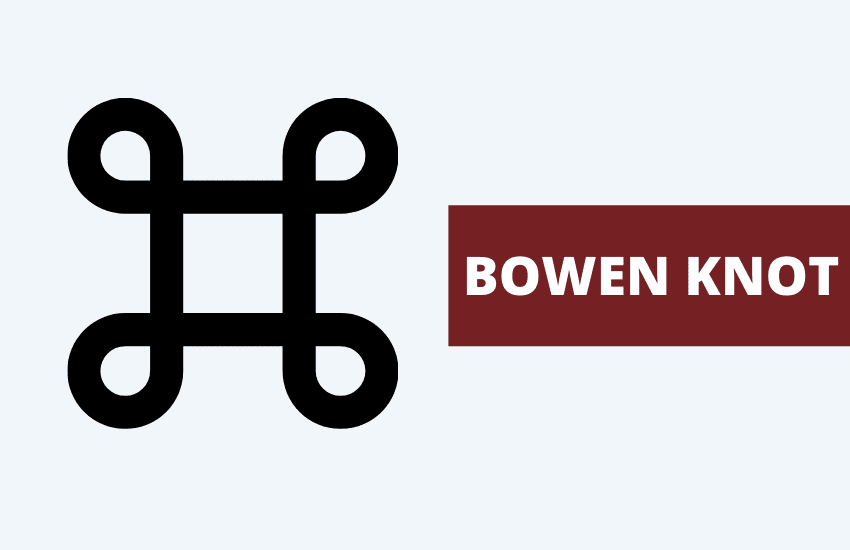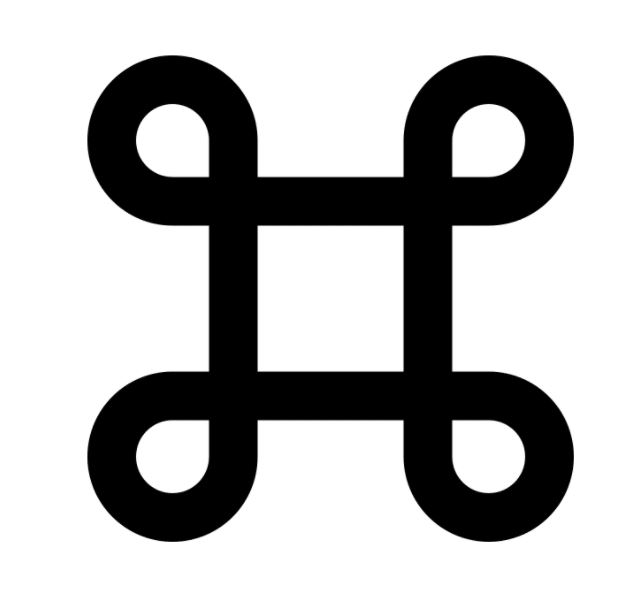
Table of Contents
The Bowen knot is an ancient symbol that belongs to a group of symbols known as ‘valknute’ in Norway. It’s an important emblem in Norwegian heraldry and is recognized by its square shapes with four loops at each corner. As a glyph, this knot is known by many names including ‘True Lover’s Knot’, ‘Saint John’s Arms’, and ‘Saint Hannes Cross’.
Although the Bowen knot is a popular symbol, not many know about its history and significance. Here’s a look at the symbolism of this heraldic emblem as well as its meaning and relevance today.
What is the Bowen Knot?

The Bowen Knot isn’t a true knot since it features complete loops that have no beginning or end. It’s actually a heraldic emblem that was named after James Bowens, the Welsh nobleman. This shouldn’t be confused with the Bowman’s Knot, which is a different type of knot altogether.
In Europe, knots of silk cord entwined in different ways were adopted as armorial bearings and were known by the names of families to whom they belong.
If you were to draw the Bowen Knot symbol, you would have from a square with loops at each corner and finish back where you started.
When the symbol is made using rope, it’s typically called a ‘Bowen knot’. When turned crosswise and its loops are made angular, it becomes a ‘Bowen cross’. It also has several variations, including the Lacy, Shakespeare, Hungerford, and Dacre knots used by different families as a heraldic badge.
One of the many Celtic love knots, this heraldic knot is known by various names including the following:
- Saint John’s Arms
- Gorgon Loop
- Saint Hannes Cross
- The Looped Square
- Johanneskor
- Sankthanskor
The Symbolism of the Bowen Knot
The continuous, endless appearance of the Bowen makes it a popular symbol of infinity, eternity, and interconnectedness.
The Celts associate this symbol with love, loyalty, and friendship and in some parts of the world, it’s considered a protective symbol that can ward off evil spirits and bad luck.
The Bowen Knot in Different Cultures
Apart from being a heraldic emblem, the Bowen knot also has a religious and mystical significance in other cultures.
In Scandinavian Culture
The Bowen knot is sometimes called Saint Hans’s cross or Saint John’s Arms in north Europe and Scandinavia. The symbol is typically related to John the Baptist, an ascetic Jewish prophet of great significance to Christianity. It’s said that the name Hans or Hannes is a shortened form of Johannes, a Proto-Germanic form of John.
Midsummer’s Eve is a festival that predates Christianity but was later rededicated to honor John the Baptist. It’s said that the fertility rites are connected with flowing water, which is represented by the Bowen knot.
In Finland, the Bowen knot was believed to protect people from bad luck and evil spirits. Due to this, it was painted or carved on barns and houses. In Sweden, it was featured on a picture stone discovered in a burial site in Havor, Gotland that can be traced back to around 400 – 600 CE.
In Native American Culture
The Bowen knot is seen on many different artifacts of the Mississippian culture of the United States. It has been featured on several gorgets—a personal adornment or pendant worn around the neck as a badge of rank—found from stone box graves and villages in Tennessee. They were made from exotic marine shells or fragments of human skulls and were engraved with intricate designs.
These gorgets date back around 1250 to 1450 CE and were thought to be symbolic of earthly and supernatural powers. The Bowen knot featured on these adornments is depicted as a looped square with other iconographic elements like a cross, a sun motif or rayed circle, and bird heads that looked similar to the heads of woodpeckers. The presence of woodpeckers in the design links these gorgets to tribal myths and symbols of war.
In North African Culture
Earlier depictions of the Bowen knot have also been found in Algeria. At the hill of Djebel Lakhdar, a block of stone in a mausoleum features two interlaced or superimposed Bowen knots. It’s said that the tombs can be dated back to 400 to 700 CE, and the motif is believed to be purely decorative art.
Some speculate that the Bowen knot was used by the Algerians as a symbol of infinity, making it an appropriate symbol to feature on a mausoleum wall. There are also several Saharan petroglyphs that feature more complex and continuous loop patterns.
The Bowen Knot in Modern Times

Today, the Bowen knot can be recognized by Mac users since it’s used as the Command key on Apple keyboards. However, its use isn’t related to how it’s used in heraldic designs. Before the Macintosh range of devices appeared in 1984, the command key had the Apple logo as its symbol.
Later on, Steve Jobs decided that the brand’s logo shouldn’t appear on a mere key, so it was replaced with a Bowen knot symbol instead. It was suggested by an artist who had come across the knot in a book of symbols. The Bowen knot fit the bill for a symbol that appears distinctive and attractive, as well as relevant with the concept of a menu command. For font fanatics, it can be found in Unicode under the designation “place of interest sign”.
In eastern and northern Europe, the Bowen knot is used on maps and signs as an indicator of places of cultural interest. These include old ruins, pre-historic sites, museums, and other areas ruined by wars or weather in the past. It’s said that the practice started in the late 1960s and continues today in many countries around the world, especially in Germany, Ukraine, Lithuania, Estonia, and Belarus.
The Bowen knot is also a popular symbol used by tattoo artists and jewelry makers. Some tattoo enthusiasts choose to have Bowen knot tattoos as a way of expressing their personalities and celebrating their Irish heritage. It’s also popularly used on various types of jewelry and in the making of charms and amulets.
In Brief
Once used as a heraldic badge, the Bowen knot became associated with infinity, love, and friendship. There are several variations of the knot used by different cultures around the globe.








